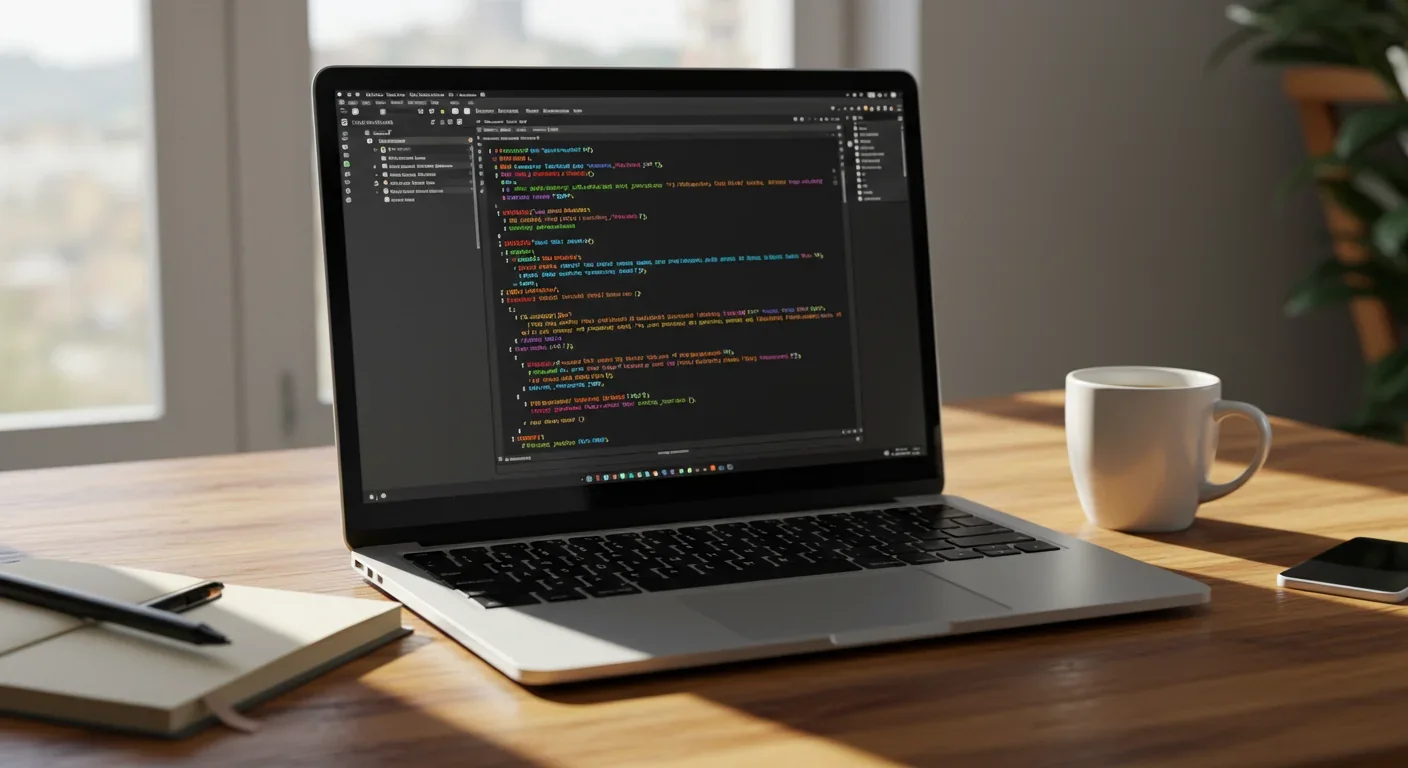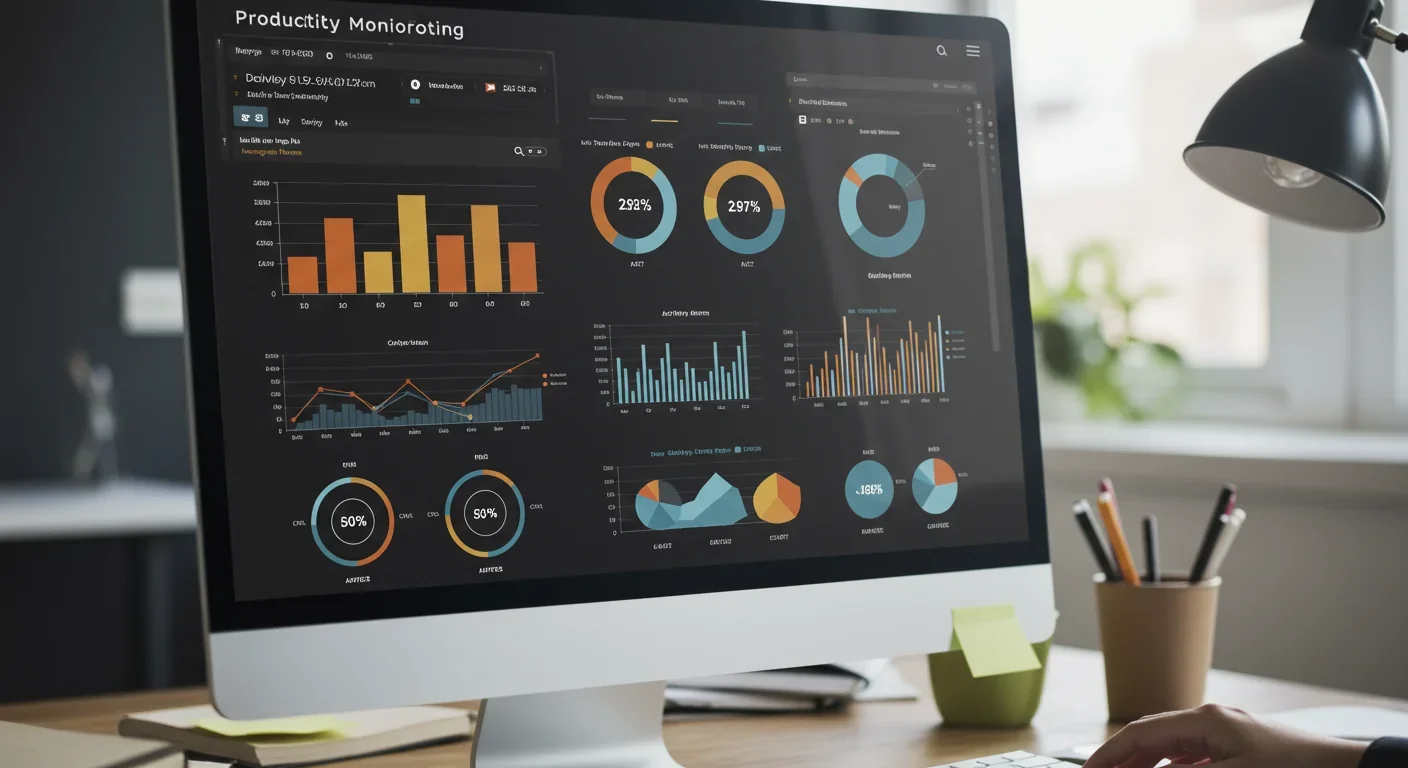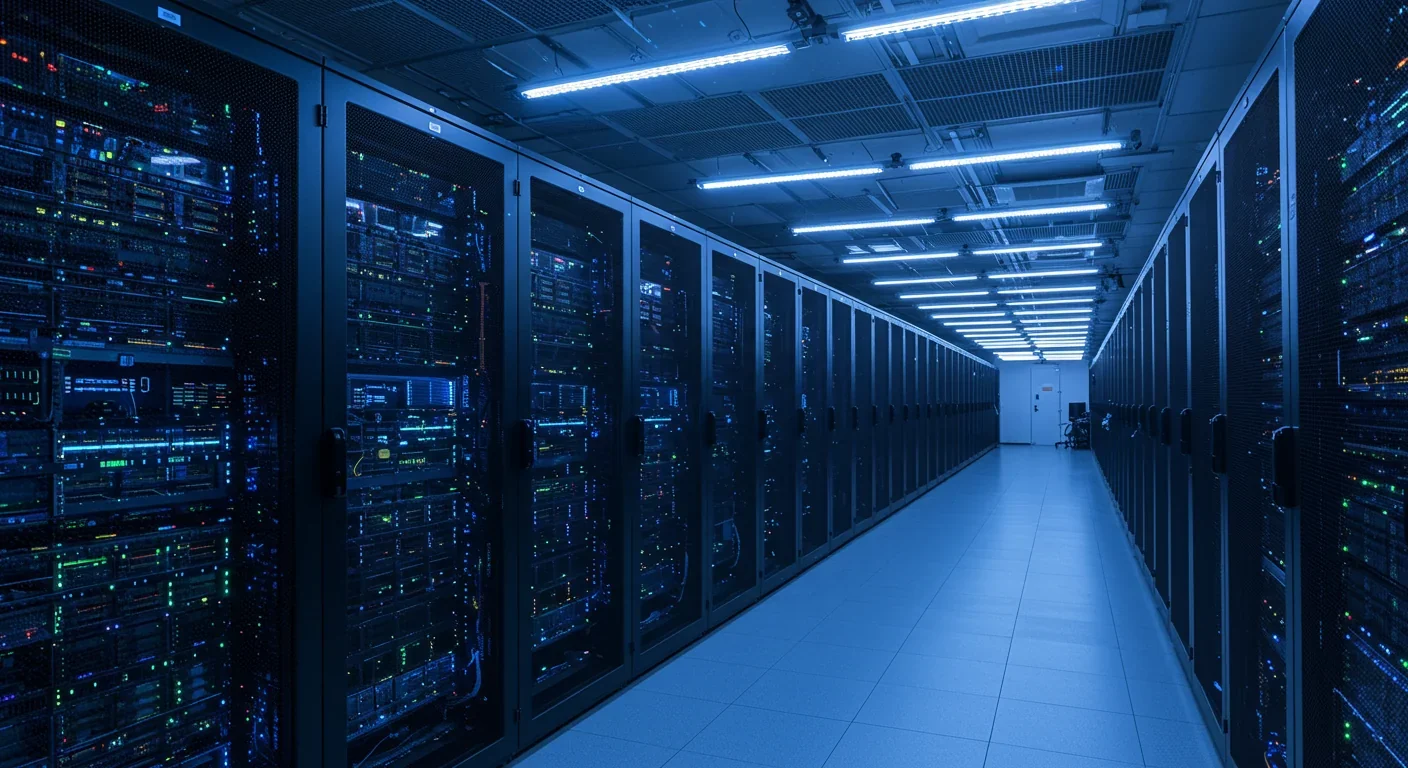When Reality Becomes Partisan: The Death of Shared Truth

TL;DR: Employee monitoring software in remote work mirrors Frederick Taylor's century-old scientific management principles, creating the same tensions between productivity and autonomy. While 60% of companies now track workers digitally, research shows surveillance often harms productivity and wellbeing more than it helps.
When your laptop camera blinks on at 9:01 AM, tracking software logs your first keystroke. By 9:15, it's captured three screenshots of your work. At 10:30, algorithms calculate your "productivity score" based on mouse movements. Welcome to remote work in 2025—where Frederick Taylor's ghost runs the show.

Taylor died in 1915, but his scientific management principles are alive and thriving in your home office. The difference? Instead of stopwatch-wielding foremen timing your bathroom breaks, invisible software does it automatically, generating data HR never dreamed possible. Roughly 60% of large companies now use employee monitoring software, a figure that's doubled since the pandemic forced everyone home.
This isn't just about checking if remote workers are slacking off. It's about a fundamental question that's haunted management for over a century: Can you trust workers without watching them?
Modern employee monitoring tools make Taylor's time-motion studies look quaint. Platforms like Teramind, Hubstaff, and ActivTrak offer surveillance capabilities that would make a 1910s factory manager weep with joy. They track every digital breadcrumb: which websites you visit, how long you spend on each application, how many emails you send, even the exact words you type.
Keystroke logging captures literally everything you enter—passwords, personal messages, medical searches. Screenshot tools grab images of your screen at random intervals, creating a visual record of your entire workday. Some systems use webcam monitoring to verify you're actually at your desk, employing facial recognition to confirm your identity. GPS tracking follows remote workers who use company devices outside the home.
The employee monitoring market is projected to reach $9.75 billion by 2030, growing at nearly 14% annually. That's not maintenance—that's explosive expansion.
The employee monitoring software market is exploding—projected to grow from $3.29 billion in 2023 to $9.75 billion by 2030. That's a 298% increase in just seven years, driven by remote work adoption and management anxiety about visibility.
What drives this gold rush? The same impulse that drove Taylor: the belief that workers, left to their own devices, will naturally slack off. Vendors market their tools with promises of "increased productivity," "reduced time theft," and "data security." But scratch the surface, and you find the same assumption Taylor made—that management's job is "knowing exactly what you want men to do, and then seeing that they do it in the best and cheapest way."

To understand where this leads, rewind to 1911. Frederick Winslow Taylor stood before Congress defending his methods after workers at the Watertown Arsenal went on strike. His crime? Implementing time-motion studies that broke every task into measurable components, then using stopwatches to determine the "one best way" to perform each action.
Taylor's scientific management rested on four principles: replace rule-of-thumb methods with scientific study, scientifically select and train workers, ensure workers follow prescribed methods exactly, and divide work between managers (who plan) and workers (who execute). Notice what's missing? Worker autonomy, creativity, or input into how work gets done.
The results were predictable. Productivity increased—at least initially. But so did worker alienation. The American Federation of Labor pushed back hard, arguing that Taylor's methods reduced skilled craftsmen to interchangeable machine parts. Congressional investigations followed, culminating in a 1912 law banning stopwatches and time studies in government workplaces.
Sound familiar? Replace "stopwatch" with "keystroke logger" and you've got the 2025 debate in a nutshell.
"The art of management has been defined, as knowing exactly what you want men to do, and then seeing that they do it in the best and cheapest way."
— Frederick W. Taylor, The Principles of Scientific Management (1911)
Taylor genuinely believed his system would create "maximum prosperity for employer and employee alike." The theory went like this: scientific methods identify the most efficient processes, workers follow them exactly, productivity soars, and everyone shares the gains through higher wages. What could go wrong?
Everything, as it turns out. Workers hated being treated like components in a machine. The system felt "too mechanical" and stripped meaning from work. Skilled trades workers particularly resented having their expertise reduced to standardized procedures. The promise of shared prosperity often failed to materialize—productivity gains went to shareholders while workers got surveillance and speedups.

Here's where it gets interesting. Despite vendor claims, the evidence that monitoring increases productivity is remarkably thin.
A Forbes Advisor survey found that 43% of workers report being monitored, but companies rarely share data proving it helps. The monitoring software industry publishes glowing statistics, but independent research tells a different story. Studies show employee surveillance can actually harm wellbeing and productivity, triggering stress, anxiety, and defensive behavior.
When workers know they're being watched constantly, they often respond by "working for the algorithm" rather than achieving meaningful outcomes. They keep their mouse moving, click between applications frequently, and avoid anything the system might flag as non-work—even if it's actually productive thinking time or legitimate research. This is called "productivity theater," and it wastes enormous amounts of actual productivity on appearing productive.
The psychological toll is measurable. Research from Mind Share Partners found that excessive monitoring correlates with increased stress, lower job satisfaction, and higher turnover. Workers report feeling "like they can't be trusted," which erodes the psychological safety that actually drives innovation and discretionary effort.
Think about it: if you're constantly aware that software is judging your every keystroke, are you more likely to take creative risks? Experiment with new approaches? Spend time thinking deeply about problems? Or are you more likely to stick to safe, measurable, box-checking tasks that won't trigger red flags?
Workers under constant surveillance often engage in "productivity theater"—keeping their mouse moving, clicking between apps, and performing visible activity rather than meaningful work. The tools designed to increase productivity can actually sabotage it.
Yet companies keep deploying these tools. Why? Because the tools provide the illusion of control. Managers feel productive when they're reviewing dashboards full of metrics. It creates what organizational psychologists call "management security theater"—it makes executives feel like they're solving the remote work problem, even if they're actually creating new ones.

The legal landscape around workplace surveillance varies wildly by jurisdiction, creating a patchwork of protections and loopholes.
In the United States, employers have remarkably broad latitude. Federal law generally allows workplace monitoring with minimal restrictions, provided employees are notified. The key exception: employers can't monitor certain communications protected by labor law, and some states require two-party consent for recording conversations. But keystroke logging, screenshot capture, and productivity tracking? Mostly legal, as long as workers know it's happening.
Connecticut requires employers to notify employees before monitoring, but many states have no such requirement. California mandates notice for electronic monitoring in specific contexts. Delaware restricts email monitoring without consent. But these are exceptions—most U.S. workers have few protections against surveillance.
Europe takes a different approach. The General Data Protection Regulation (GDPR) requires that any monitoring be necessary, proportionate, and transparent. Employers must have a legitimate reason for surveillance, use the least intrusive methods possible, and clearly inform workers what data is collected and why. Workers have rights to access their data, correct inaccuracies, and in some cases object to processing.
This creates fascinating dynamics for global companies. A multinational corporation might deploy aggressive monitoring for U.S. workers while using far more limited tools for European employees—not out of benevolence, but because EU regulators will fine them into oblivion for GDPR violations.
Other jurisdictions fall somewhere between. Canada requires employers to show legitimate business purposes and minimize intrusion. Australia mandates that monitoring be reasonable. In practice, "reasonable" becomes a legal judgment call, often resolved after the damage is done.
The enforcement gap is crucial. Even where laws exist, workers rarely know their rights or have resources to challenge violations. An employee who discovers their employer secretly monitored personal messages might have legal recourse—but most need the job more than they need vindication.
Strip away the technology, and workplace monitoring reveals a fundamental power asymmetry. Employers demand transparency from workers while maintaining opacity about how surveillance data gets used, who sees it, and what triggers disciplinary action.
This one-way transparency corrodes trust. Research shows that monitoring signals distrust, which workers inevitably reciprocate. If your employer doesn't trust you to work without constant oversight, why should you trust them to use that data fairly?
The asymmetry extends to who designs these systems. Workers rarely get input into what gets monitored, how metrics are calculated, or what constitutes acceptable behavior. Algorithms make judgment calls—flagging someone as "low productivity" because they spent time thinking through a complex problem without generating visible keystrokes. These systems embed management assumptions about what work looks like, often missing the actual work that matters.
"When you implement monitoring technology, you're making a statement: 'I don't trust you.' Once you've made that statement, you can't take it back. The relationship fundamentally changes."
— Workplace psychology researcher, IOSH Magazine (2024)
Taylor made the same mistake. His time-motion studies captured easily measurable tasks—how long it takes to shovel coal or move pig iron—but completely missed creative problem-solving, collaboration, or skill development. Modern monitoring tools suffer from the same blind spot. They count emails but can't judge if those emails actually advanced projects. They track time in applications but can't assess if that time was well-spent.

Worse, the data creates new vulnerabilities. Detailed logs of worker activity become weapons during layoffs, arbitration, or performance reviews. Managers cherry-pick metrics that support predetermined conclusions. An employee targeted for termination suddenly finds that their "productivity scores" have been below threshold for months—even though no one mentioned it until the company needed justification.
This is called "algorithmic management," and it's spreading beyond monitoring into hiring, scheduling, and compensation. Amazon warehouse workers get fired by algorithms that flag insufficient productivity. Uber drivers get deactivated by automated systems. The pattern is clear: replace human judgment with metrics, then claim the data "objectively" supports whatever decision management wants.
Just as workers pushed back against Taylorism, a modern resistance movement is emerging. Some tactics are subtle—workers have developed sophisticated methods to game monitoring systems. Move the mouse periodically using automated tools. Keep email applications open in the background. Click between browser tabs to generate "activity." It's remarkably similar to how factory workers learned to look busy when foremen approached.
Other responses are more direct. Workers are increasingly refusing jobs that require invasive monitoring, especially as labor markets tighten. Job seekers ask about surveillance policies during interviews, and companies with reputations for aggressive monitoring struggle to recruit talent. Reddit and Glassdoor overflow with warnings about specific employers' monitoring practices.
Unionization efforts increasingly cite surveillance as a motivating factor. The Amazon Labor Union highlighted monitoring systems in their organizing campaigns. Gig workers at Uber and Instacart protest algorithmic management. Even white-collar workers—traditionally resistant to unions—are exploring collective bargaining partly to push back against surveillance.
Legal challenges are mounting too. Workers are filing lawsuits alleging privacy violations, discrimination (monitoring data used to target protected classes), and violations of labor law (surveillance used to suppress organizing). While most cases settle quietly, the legal pressure is forcing companies to reconsider the most aggressive tactics.
Some workers are simply quitting. The phenomenon of "conscious unbossing"—deliberately seeking jobs with less surveillance—is growing. People are accepting pay cuts to work for smaller companies with less monitoring infrastructure. The Great Resignation wasn't just about remote work flexibility; for many, it was about escaping surveillance.
The irony is that better alternatives exist. Companies that manage remote workers without aggressive monitoring often see better results.
Output-based management focuses on outcomes rather than activity. Instead of tracking hours and keystrokes, managers evaluate whether employees deliver agreed-upon results. This treats workers as professionals responsible for managing their own time and methods. It requires clear goal-setting, regular check-ins, and trust—but it actually measures what matters.
Research consistently shows that autonomy drives productivity, creativity, and job satisfaction. When workers have control over how they accomplish goals, they're more engaged and innovative. Surveillance does the opposite—it removes autonomy and triggers exactly the behaviors it's trying to prevent.
Companies like GitLab, Basecamp, and Buffer manage fully remote global teams effectively without invasive surveillance. Their secret? They hire adults, treat them like adults, and focus on outcomes rather than activity monitoring.
Some companies use limited, transparent monitoring focused on specific legitimate needs. Tracking time spent on client projects for billing purposes makes sense. Monitoring access to sensitive systems for security is reasonable. The difference is proportionality and transparency—workers understand why the monitoring happens and how data gets used.
Building a culture of trust requires investment. Regular communication, clear expectations, professional development, and treating employees as partners rather than suspects. It's harder than buying monitoring software, but it works better.
GitLab, Basecamp, and Buffer—fully remote companies—manage global teams effectively without invasive surveillance. They focus on asynchronous communication, clear documentation, and outcome-based evaluation. They hire adults and treat them like adults. Revolutionary, right?
We're at a crossroads that Taylor never imagined. Technology makes surveillance cheaper and more comprehensive than ever before. But that same technology enables collaboration, flexibility, and new work models that can benefit everyone—if we choose to use it that way.
The dystopian path is clear: surveillance escalates, workers respond with resistance and gaming, trust erodes further, and we end up with sophisticated monitoring systems measuring increasingly meaningless metrics. Productivity theater reaches new heights while actual productivity stagnates.
The alternative requires reimagining management for the 21st century. Recognize that knowledge work differs fundamentally from factory work—it requires creativity, problem-solving, and collaboration that monitoring tools can't capture. Build systems that support worker autonomy rather than undermine it. Use technology to enable communication and coordination, not surveillance and control.
Regulation will play a role. The U.S. needs baseline protections around workplace surveillance—notice requirements at minimum, ideally constraints on what can be monitored and how data can be used. Europe's approach isn't perfect, but it's far better than the free-for-all American workers face.
Workers need education about their rights and collective power to push back. Union organizing, conscious job selection, and public pressure all matter. Companies with terrible surveillance practices should face reputational consequences.
Ultimately, this is about what kind of work culture we want. Do we want relationships built on trust and mutual benefit, or suspicion and control? The technology is neutral—it's how we choose to deploy it that matters.
Frederick Taylor believed his scientific management would create prosperity for everyone. It didn't work out that way, and neither will digital Taylorism. A century ago, workers pushed back against stopwatches and time studies. Today's workers are pushing back against keystroke loggers and screenshot surveillance.
The question isn't whether surveillance technology exists—it does, and it's not going away. The question is whether we'll let it define our work relationships, or whether we'll insist on something better. Management theorists have spent the past 50 years discovering what workers knew all along: people do better work when you treat them with respect and give them autonomy.
Maybe it's time to listen.

Curiosity rover detects mysterious methane spikes on Mars that vanish within hours, defying atmospheric models. Scientists debate whether the source is hidden microbial life or geological processes, while new research reveals UV-activated dust rapidly destroys the gas.

CMA is a selective cellular cleanup system that targets damaged proteins for degradation. As we age, CMA declines—leading to toxic protein accumulation and neurodegeneration. Scientists are developing therapies to restore CMA function and potentially prevent brain diseases.

Intercropping boosts farm yields by 20-50% by growing multiple crops together, using complementary resource use, nitrogen fixation, and pest suppression to build resilience against climate shocks while reducing costs.

Cryptomnesia—unconsciously reproducing ideas you've encountered before while believing them to be original—affects everyone from songwriters to academics. This article explores the neuroscience behind why our brains fail to flag recycled ideas and provides evidence-based strategies to protect your creative integrity.

Cuttlefish pass the marshmallow test by waiting up to 130 seconds for preferred food, demonstrating time perception and self-control with a radically different brain structure. This challenges assumptions about intelligence requiring vertebrate-type brains and suggests consciousness may be more widespread than previously thought.

Epistemic closure has fractured shared reality: algorithmic echo chambers and motivated reasoning trap us in separate information ecosystems where we can't agree on basic facts. This threatens democracy, public health coordination, and collective action on civilizational challenges. Solutions require platform accountability, media literacy, identity-bridging interventions, and cultural commitment to truth over tribalism.

Transformer architectures with self-attention mechanisms have completely replaced static word vectors like Word2Vec in NLP by generating contextual embeddings that adapt to word meaning based on surrounding context, enabling dramatic performance improvements across all language understanding tasks.